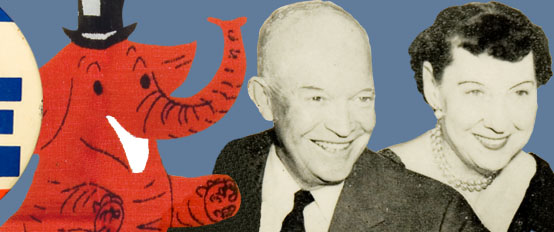As a soldier, Dwight Eisenhower was reluctant to engage in politics. After securing the 1952 Republican nomination, he and Vice Presidential candidate, Richard Nixon, waged a vigorous campaign against the Democratic nominee, Governor Adlai Stevenson of Illinois. At age 61, Ike took to the rails aboard the Eisenhower Special conducting the last of the great whistle stop campaigns. During the eight week campaign he traveled over 51,000 miles through 45 states. He promised Americans a balanced budget, peace in Korea, and a clean-up of the “mess” in Washington. Most impressive to voters was Eisenhower’s popular image as a likeable, modest war hero and family man, an image too formidable for Stevenson to overcome.
In 1956, Stevenson again challenged Eisenhower for the presidency in the first truly national television campaign. Because of his heart attack in 1955, Eisenhower wasn’t healthy enough to put in long hours on the campaign trail. He relied heavily on television. His TV campaign ranged from White House coffee klatches to a Presidential birthday party hosted by actor Jimmy Stewart. Ike's television appearances were successful in part due to the guidance of his media consultant, actor Robert Montgomery. Stevenson never quite mastered the new medium. The result was a Republican landslide, 457 electoral votes to 73. |






